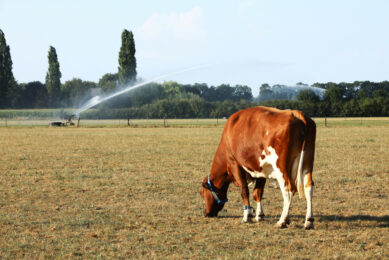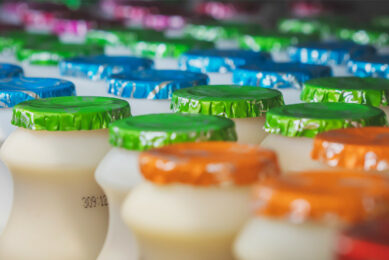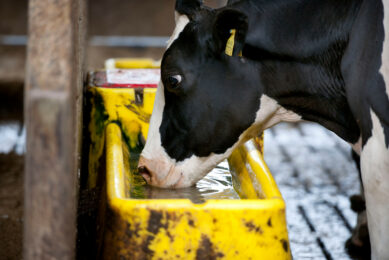10 practices to manage heat stress in dairy cows
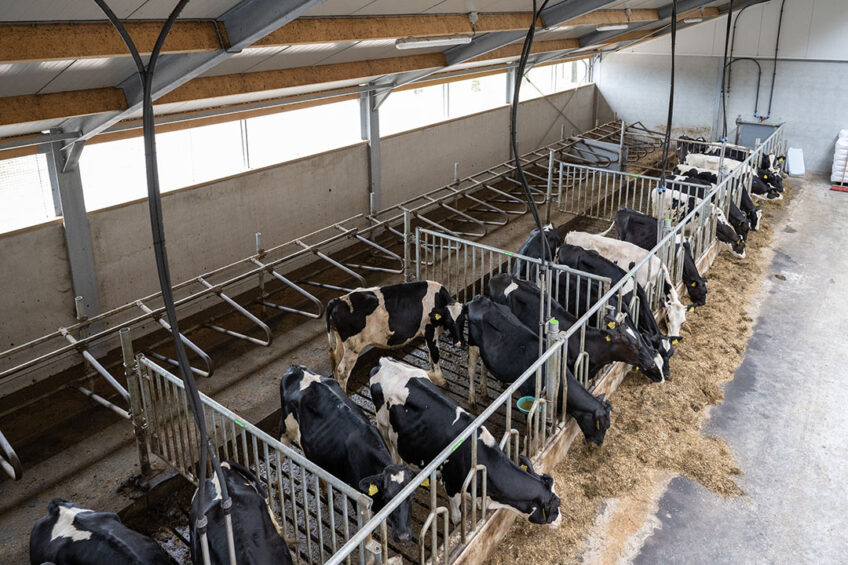
Heat stress in dairy cows is often mistakenly thought to happen only in the Middle East and other countries savaged by high temperatures. However, with the world heating up thanks to a myriad of factors, climate change is driving up the incidence of heat stress in cows in many other locations.
Even in cooler climates, such as in the UK and Ireland, summer temperatures are continuing to climb, affecting more cows every year. Countries that practise pasture-based dairying are, obviously, very susceptible to heat stress, but cows housed indoors 24/7 can also become victims to the elements.
Heat stress can be defined as a set of behavioural and physiological changes in cows trying to maintain their optimal body temperature. Dairy cows are homeothermic animals and need to maintain a constant body temperature of around 38.8°C +/- 0.5°C. They are very sensitive to changes in air temperature and relative humidity.
Behavioural changes
Heat stress can cause cows to have an increased respiratory rate, to drink more water, to stand more, and to decrease dry matter intake.
They will often bunch together, especially around water troughs or fresh, cool air breezes or near the top of sheds. This behaviour is hard to understand and may indicate that cows are searching for the freshest air or may be a herd instinctive response to danger or stress.
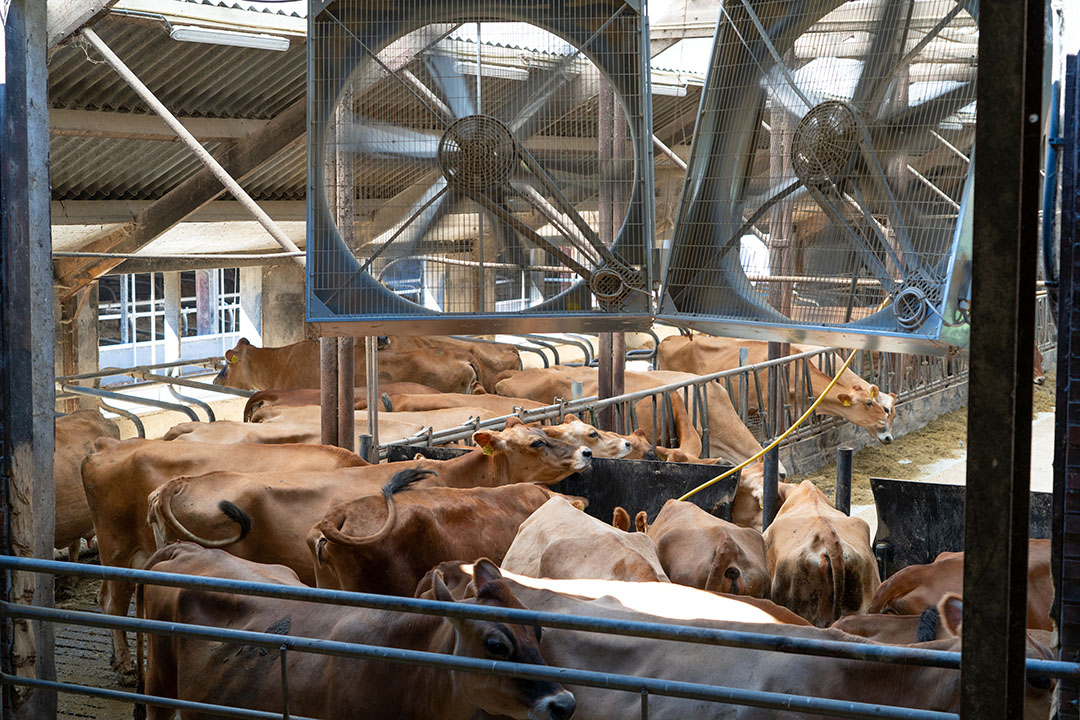
10 practices to manage heat stress
- Make sure cows have access to a plentiful supply of fresh water. Farmers should provide adequate water troughs in the house or field to allow access for all cows, not just the dominant ones in the herd.
- Depending on the situation, grazing cows at night and housing them in the daytime could help. Ensuring cows get sufficient time to meet dry matter intakes at the feed barrier when it is cooler may be more important, so farmers need to decide the best option for their circumstances. Nights are significantly cooler, and a breeze at pasture will help cows cool down and recover.
- Access to shade is very important for all cows enduring hot temperatures. This could be in the form of housing, or a series of shade cloths erected in the fields or yards.
- Make sure there is enough air movement. An ideal breeze is at least 1.5-2m/s air movement, which will cool the skin and create evaporative heat loss. Fans are used in many sheds, placed over the beds and set at the right intervals of lying times and the correct angles to blow onto the cows and encourage them to lie down. In conditions in the UK, the stack effect is still the best way to drive air exchange and remove humidity. This means farmers should focus on fans for air movement at cow level within the shed, as opposed to fans for air exchange.
- Reduce the number of cows in the shed, as more space means less localised build-up of hot and humid air.
- Try to minimise standing time in the parlour, as this is where many cows accumulate heat. Splitting milking groups in half will reduce some of this. Give cows more space in the collecting yard so they can get some air movement around them. Fans can also help here, too.
- If cows are housed, split the daily feed and deliver 60% in the evening when cows are more likely to feed.
- Alter the energy density of the ration to compensate for reduced dry matter intake.
- If using fans with water, farmers should be aware of the difference between misters, which cool the air but don’t wet the cow, and soakers, which wet the cow. The droplet size is critically important for misters, which are a more sophisticated option. Soakers may be used to wet cows as they enter the collecting yard, followed by fans to increase evaporative heat loss.
- Pay special attention to sick cows. They are likely to benefit from rapid and regular pumping with sufficient volume of oral fluids and electrolytes.
New study
A new £1.24 million (€ 1.4 million) study aiming to mitigate heat stress problems in cows is underway in the UK as researchers try to understand the interactions of ambient temperatures, building microclimates, cow physiological processes and changes in cow behaviour.
The study is being undertaken as a collaboration between the University of Reading, Cardiff University, the University of Essex and Writtle University College.
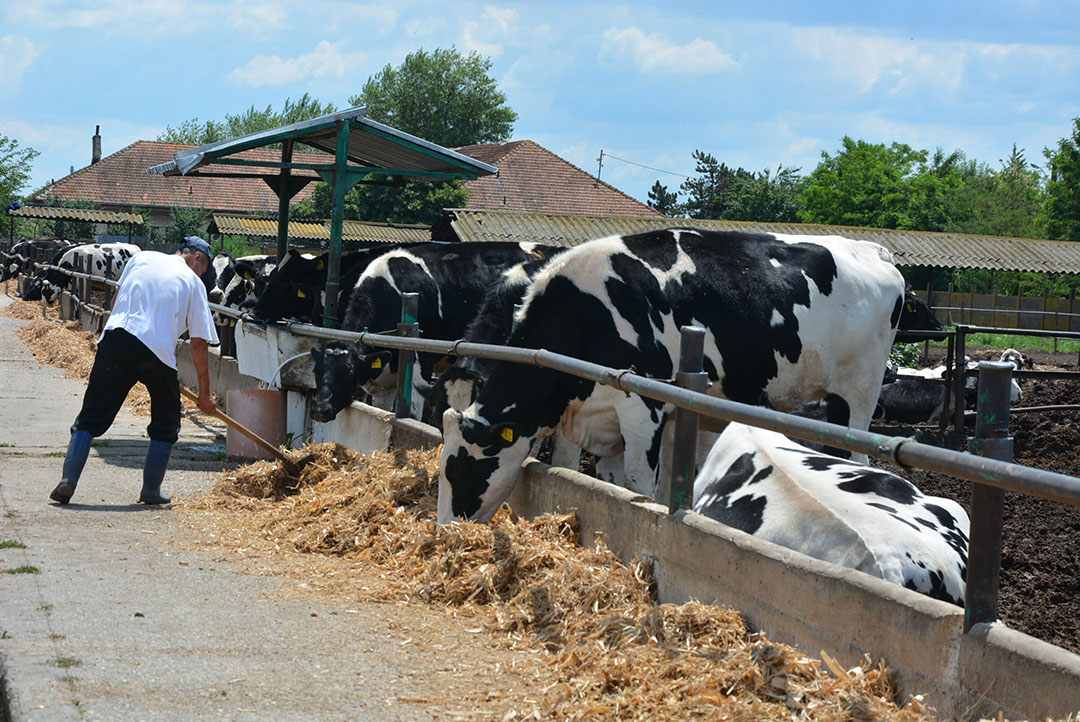
Chris Reynolds, a professor of animal and dairy sciences at the University of Reading, said: “Heat stress due to climate change could have severe negative consequences for the health and productivity of dairy cows. Lactating cows have a high rate of metabolism, which makes them less tolerant of high temperatures.”
He said that research is essential to inform and shape future cow management strategies and building designs. “We have to respond to the changing environment and – through better understanding of how cows interact with building microclimates – design housing and management systems that minimise heat stress and enable more sustainable dairy systems.”
Research will be conducted at the University of Reading’s Centre for Dairy Research and 6 commercial dairy farms across the UK. Individual cow behaviour will be tracked using technology that can give meaningful insight into patterns of movement, activity and space use by herds. This will be combined with continuous sensor monitoring of barn microclimates to model and predict the complex interactions between cow behavioural choices and their housed environment.
Data collected in the monitoring of microclimates will include temperature, humidity and air quality, as well as detailed ventilation surveys. This will be combined with physiological data, such as body temperature, production and health readings to enable detailed analysis of how indoor-housed dairy cows respond to, and cope with, heat stress over different timescales.
Join 13,000+ subscribers
Subscribe to our newsletter to stay updated about all the need-to-know content in the dairy sector, two times a week.




